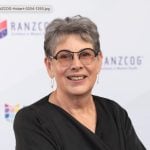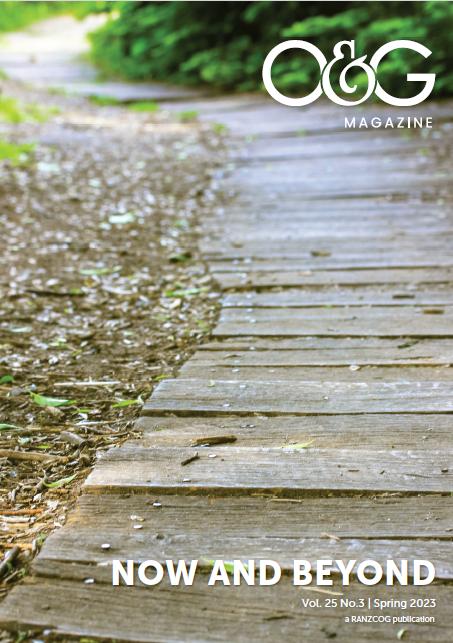Disclaimer
I write from a position of privilege as a British immigrant to New Zealand in the 1950s. After a period of living in Australia and North America, I returned to Aotearoa in the early 2000s and have attempted to embrace my position as pakeha, which defines me according to my British/colonial heritage and in my relationship to Māori. My adult children, my Māori patients and colleagues have been my teachers on my journey to decolonise my mind and in the work that I am involved in with RANZCOG. This paper provides background to the release of the RANZCOG Statement of Intent on Cultural Safety.
Striving for equity
According to the World Health Organisation, health is a fundamental human right. WHO is a therefore a strong advocate for equity in health which it defines as “the absence of unfair, avoidable or remediable differences among groups of people, whether those groups are defined socially, economically, demographically, or geographically or by other dimensions of inequality (e.g. sex, gender, ethnicity, disability, or sexual orientation)”. Despite concerted efforts in Australia and New Zealand, a lack of health equity across our populations remains a key challenge, perhaps most strikingly with our Aboriginal and Torres Strait Islander and Māori populations.
Acquiring knowledge in pursuit of Cultural Competence
Individual clinician practice has long been recognised as an important tool for improving equity. Cultural competency training was introduced in the 1980s as part of a strategy to reduce health disparities. The focus of this training was largely on the acquisition of knowledge of the characteristics, cultural beliefs, and practices of different non-majority groups. Over time the approach has matured, and new terminology proliferated with the introduction of terms such as: cultural awareness; cultural sensitivity; cultural humility; cultural security; cultural respect; cultural adaptation; and transcultural competence or effectiveness. By the early 2000s, cultural competency began to be described in terms of both individual and organisational level responsibility.
Knowledge is what we crave in medicine. It is what gives us our value as clinicians and enables us to provide care for our patients. However, it is increasingly recognised that by being the holders of knowledge there is an inherent power differential between clinicians and our patients. To ensure our patients are active partners in their own care we now know that we need to acknowledge and actively address this power differential. The same challenge holds true with cultural knowledge and the idea of acquiring competency in another’s culture. Cultural competency on its own has been shown to perpetuate a process of “othering”, that identifies those that are thought to be different from oneself or the dominant culture and perpetuates alienation, marginalization, decreased opportunities, internalised oppression, and exclusion. In addition, the acquiring of cultural competence leading to a state of “knowing” places the practitioner at risk of assuming they understand the needs of the patient based on the perceived culture of the patient.
Addressing power imbalance to create cultural safety
There is now general agreement that to better address issues of equity, the power dynamics between clinicians and their patients need to be actively acknowledged as a barrier to safe care. Cultural safety is the term that has been adopted to describe this change in clinician focus from knowledge of others to a deeper understanding of themselves. It does not replace the need for knowledge, but rather emphasises that knowledge without insight and personal reflection is a dangerous thing. It is a paradigm shift, moving the focus to the culture of the clinician or the clinical environment rather than the culture of the ‘exotic other’ patient. It requires health providers to question their own biases, attitudes, assumptions, stereotypes, and prejudices that may be contributing to a lower quality of healthcare for some patients.
Learning from our patients
An experience in providing care for a Māori woman at my colposcopy clinic challenged my preconceptions and contributed to my journey towards becoming a culturally safe doctor. Patient A was described in my clinic list as a recurrent DNA (Did Not Attend). She was not expected to attend, and the clinic had been booked accordingly. When I called her name, however, she immediately stepped forward. She exuded mana, occupying her space with authority. I knew I needed to take my time. She wanted to understand more about colposcopy and why it was so important forher to undergo this examination. Things seemed to be going well until I suggested we progress to the colposcopy room. At this point she stood up and told me that she was not ready for a colposcopy today. The little voice in my head told me I had failed, I should press her to stay because she would not be back, this was her opportunity for the care she needed. I might have listened to this voice had her mana not clearly said “Let me do this my way”. After confirming she felt comfortable to come back and see me at some future date, we went to the booking desk together and made an appointment for 6 or so weeks hence. I really didn’t expect her to show. However, 6 weeks later there she was accompanied by a teenaged boy and a young woman. Patient A explained to me the young man was her son and she thought his attendance at the clinic was an opportunity to educate him about women’s health issues and some of the consequences of sexual activity. The young woman worked as a coordinator on the pap smear bus, which moved to various sites of work, opportunistically offering free pap smears to employees. She had never seen a colposcopy and A felt this would help her friend with her job. The examination progressed uneventfully; A’s changes were low grade. She was happy and her whanau left with enhanced women’s health literacy.
This patient encounter taught me the value of taking a strengths-based approach to care and trusting my patient to direct their own care. The benefits of this approach were far greater than I would have achieved had I been insistent on my own way of doing things, informed by my biases and assumptions about A’s motivations.
RANZCOG Statement of Intent on Cultural Safety
The College has recently released a statement of intent outlining its commitment to embed cultural safety in everything that it does and its commitment to lead and advocate for equity in women’s health. This approach is in line with the expectations of regulatory agencies in Australia and New Zealand, which now require clinicians to actively reflect on their own views and biases and how these could affect their decision-making and health outcomes for the patient, and for medical colleges to embed cultural safety in the provision of education, training, continuing professional development, clinical guidelines, patient resources, and workforce development. Details as to what this will look like in these areas of College work will be shared as they are developed.
One of the most challenging questions the Cultural Safety Steering Group considered during the development of the Statement of Intent was “Does the concept of Cultural Safety have value and relevance beyond our indigenous populations?” Irihapeti Ramsden, the New Zealand nurse, thought leader and academic, who coined the term Cultural Safety, was initially focused on decolonising nursing practice to support Māori nurses in their interaction with a western based nursing service. Over the past two decades this term has been useful to help understand the relationship between colonisation, racism, and equity on the health of indigenous populations. It is worth noting, however, that towards the end of her career, Irihapeti Ramsden came to the realisation that Cultural Safety was more about the culture of the healthcare professional and profession than the culture of the patient. Cultural Safety was in essence an aspect of Patient Safety involving a transfer of power from the healthcare professional to the patient as the expert in their own needs. Dr Ramsden felt that it was for patients, not healthcare professionals, to judge the quality of the care they received and whether that care was safe for them. Viewed in this way, Cultural Safety is relevant to all patients, most particularly those with backgrounds and characteristics against which the clinician may be seen as different or an “exotic other”.
RANZCOG’s challenge is to embed Cultural Safety deeply within its organisational culture and to recognise that this process is a journey of self-transformation. Ultimately the judge of how successfully this endeavour has been met will be our patients and our communities.
A selection of readings
RANZCOG Cultural Safety Statement of Intent. July 2023. https://ranzcog.edu.au/wp-content/uploads/2023/07/Cultural-Safety-Statement-of-Intent.pdf
Elaine Papps, Irihapeti Ramsden 1996. A focus for the delivery of quality care through changes in thinking about power relationships and patients’ rights. Int. J. Qual. Health CareJ. Int. Soc. Qual. Health Care, 8 (1996), pp. 491-497, 10.1093/INTQHC/8.5.491
Elaine Papps, Irihapeti Ramsden, Cultural Safety in Nursing: the New Zealand Experience, International Journal for Quality in Health Care, Volume 8, Issue 5, 1996, Pages 491–497, https://doi.org/10.1093/intqhc/8.5.491
Curtis, E., Jones, R., Tipene-Leach, D. et al. Why cultural safety rather than cultural competency is required to achieve health equity: a literature review and recommended definition. Int J Equity Health 18, 174 (2019). https://doi.org/10.1186/s12939-019-1082-3
Peggy McIntosh. White Privilege: Unpacking the Invisible Knapsack. Peace and Freedom Magazine, July/August, 1989, pp. 10-12 https://nationalseedproject.org/Key-SEED-Texts/white-privilege-unpacking-the-invisible-knapsack
This pākeha life. An unsettled memoir. Alison Jones. Published 2020, Bridget jones Books Ltd.
Cultural Safety Training Plan for Vocational Medicine in Aotearoa. Jan 2023. Council of Medical Colleges and Te Oracollaboration. www.cmc.org.nz/media/4xmpx1dz/cultural-safety-training-plan-for-vocational-medicine-in-aotearoa.pdf
Courses
AIDA’s Cultural Safety Training. The program is delivered over an 8.5-hour day, usually between 9am and 5pm. It includes interactive and experiential teaching, as well as preparatory and follow-up activities. https://aida.org.au/cultural-safety-program/what-is-cultural-safety/
MIHI 501 and MIHI online courses. Open to registrars and consultants/Fellows of RANZCOG only. This course comprises online learning modules, and one Hauora Māori Workshop held in Christchurch.





Leave a Reply